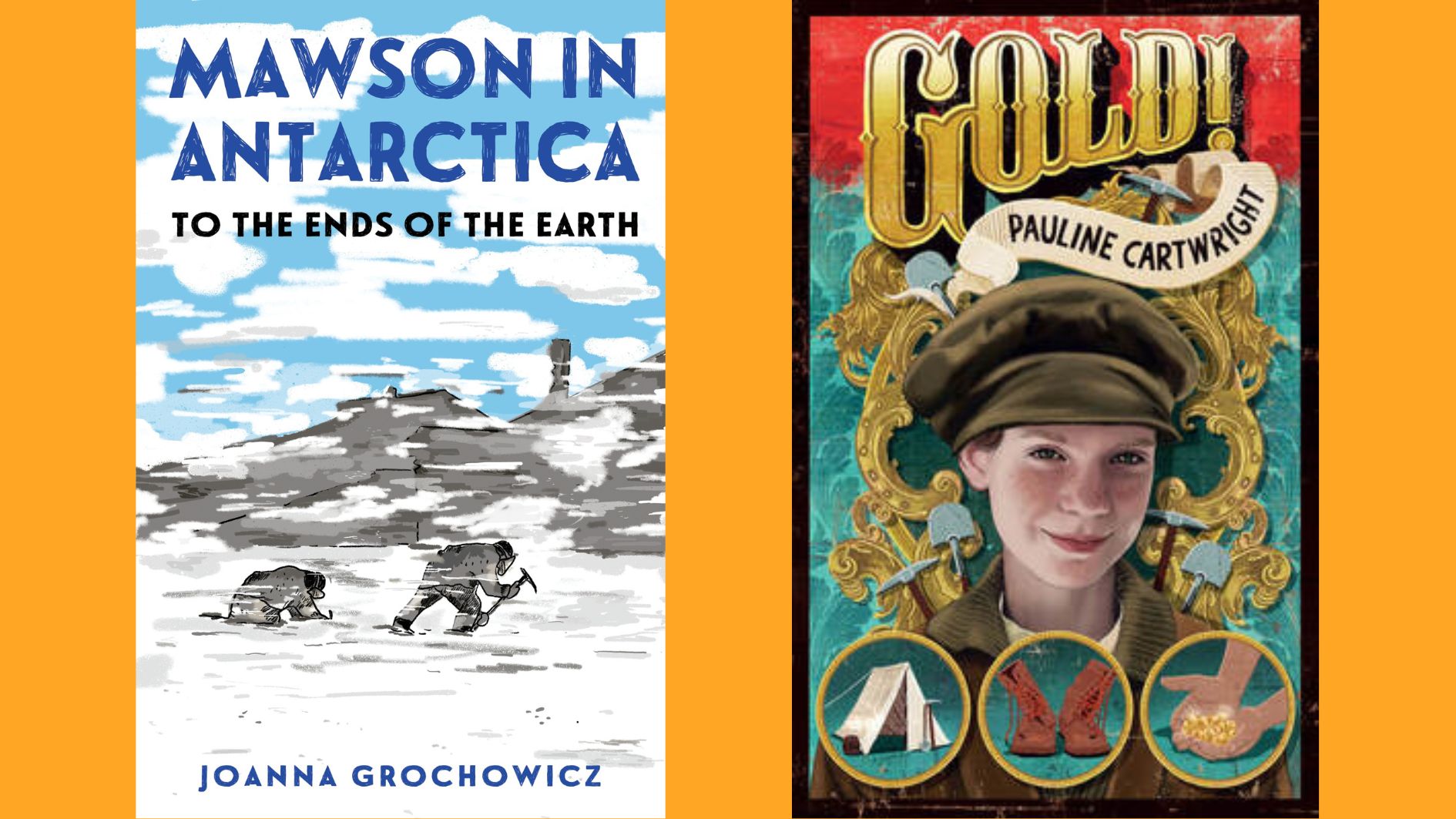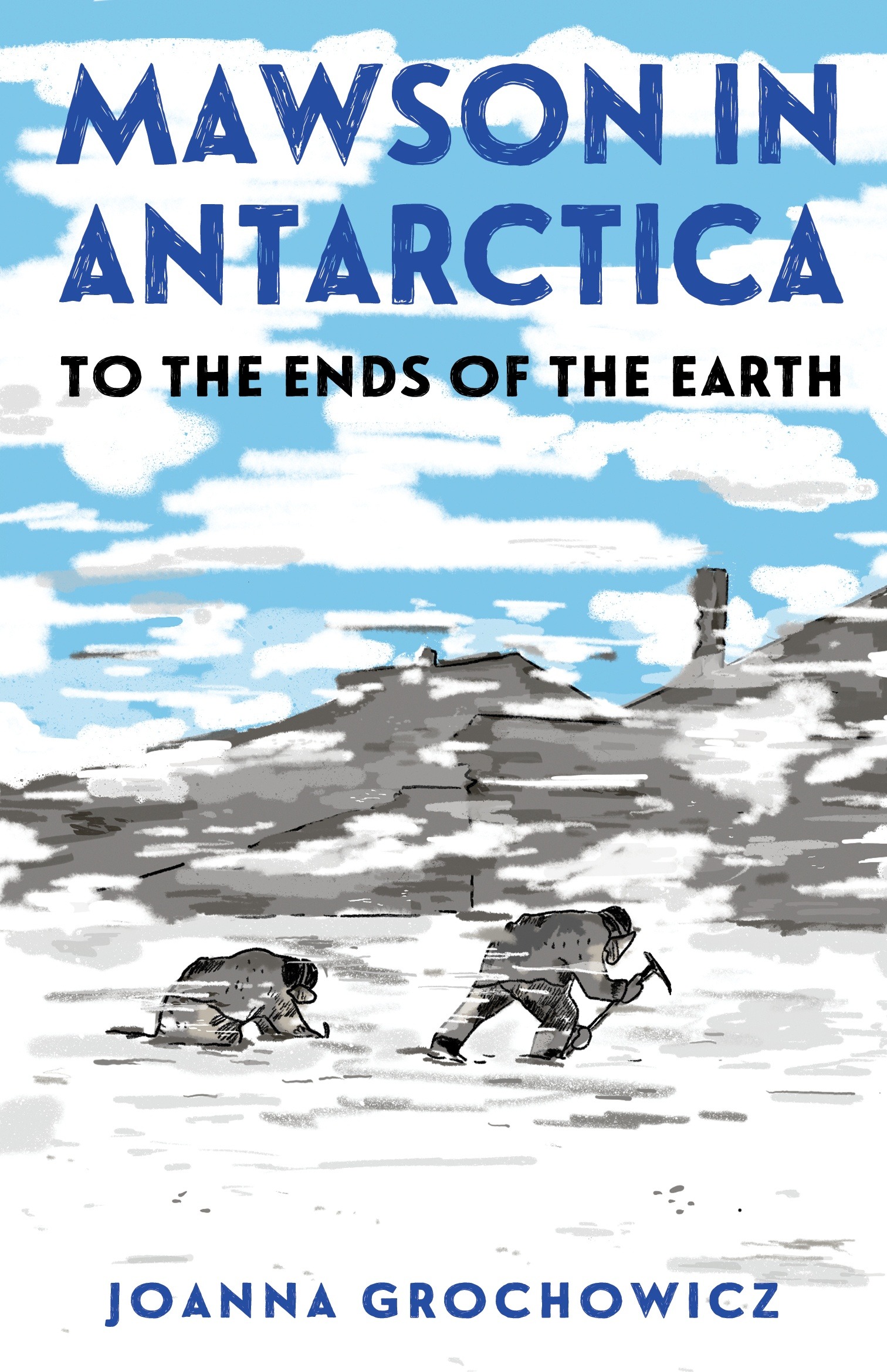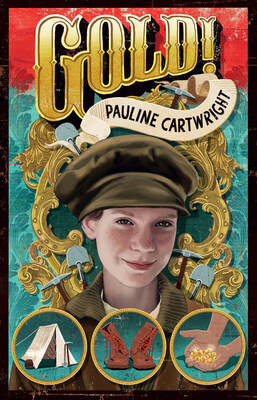Joanna Grochowicz adds another Antarctic exploration journey under her belt and Pauline Cartwright’s re-released story of the Otago goldfields is back with a fresh face. Denika Mead reviews.

Mawson in Antarctica: To the Ends of the Earth, by Joanna Grochowicz (Allen & Unwin)
Would you risk your life to explore one of the most hostile environments in the world?
Joanna Grochowicz’s Mawson in Antarctica: To the Ends of the Earth is a gritty middle-grade non-fiction narrative about Douglas Mawson’s expedition to Antarctica with a determined, but inexperienced team of explorers.
Mawson in Antarctica is the newest of Grochowicz’s books on Antarctic exploration. An accomplished author, Grochowicz’s other titles on the topic are Into the White: Scott’s Antarctic Odyssey and Shackleton’s Endurance: An Antarctic Survival Story. She draws on her experience as a polar historian which lends an authenticity to the work.
Grochowicz has done well at portraying these historical figures.
Exploring Antarctica is dangerous and everyone in the expedition is pushed to the limit. Grochowicz keeps her young audience in mind and strikes a delicate balance between staying true to history and writing an engaging story that’s appropriate for middle-grade readers. She makes it clear from the beginning that two members of the group don’t make it back. This gives forewarning and makes the deaths less of a shock.
A map of the expedition is included at the start of the story, with a line marking their journey. This is a fun detail that lets readers visualise the distances the explorers travelled. There is also a two-page illustration of the explorers sitting around a table in their hut. The members of the expedition are listed in the front with their ages and roles, which is a nice guide to help keep track of everyone.
Grochowicz has done well at portraying these historical figures. The second half in particular was riveting, and I sped through it. The novel is written with a distant third person point of view. At first, it was hard to connect to the explorers, but as the novel progresses you care deeply for them, especially as their supplies run dangerously low and frostbite sets in. It made me appreciate warmth, food, and shelter in a whole new way.
The writing style made some scenes that could have been very intense more palatable. This was the case when, due to lack of supplies, the team were forced to eat the dogs they had cared for. There are some references to suicide and contemplation of death, however, no detail is shown.
Mawson in Antarctica is a powerful tale, perfect for young readers looking for a nail-biting adventure from the comfort of home.
Photos of the expedition are included midway through the novel, which helps connect the story with the people it’s based on. It also helps the reader gain a clearer picture of the struggles they endured. The photo of an explorer battling against the raging wind was particularly striking.
Grochowicz conjures strong images of this inhospitable wasteland. Towards the start, she describes seals as looking like an oil spill, which has environmental overtones and evokes the necessity of preserving this unique landscape.
The author explains the tools and equipment the explorers used in an engaging and educational way for young readers. “There is the magnetograph to measure variations in the earth’s geomagnetic field; the barograph to keep track of air pressure”. I think older children will be intrigued by the technical equipment and how it works. Mawson in Antarctica is a powerful tale, perfect for young readers looking for a nail-biting adventure from the comfort of home.

Gold!, by Pauline Cartwright (Scholastic NZ)
Will Mary find her father at the goldfields before her secret is discovered?
Gold! by Pauline Cartwright was originally published in 2004 by Scholastic, titled Finding Father. Then it was re-released under the My New Zealand Story series with the title, Gold! This edition with its redesigned cover is striking and modern with the combination of red, blue, and gold working well together.
The My New Zealand Story series is an immersive way for young New Zealanders to learn about Aotearoa’s history and Gold! is no exception. Cartwright tells the story of the goldfields in 1862 Otago, through the eyes of young Mary, a girl desperate to find her father who never returned from his quest for gold. She vows to bring him home. However the goldfields are no place for a girl, so she disguises herself as a boy. With the alias of Harry, Mary sets out alone, determined to find her father.
Mary is a compelling character who you’ll cheer on from beginning to end.
Cartwright is an accomplished author of well-regarded children’s fiction. Gold! has smooth prose and a well-constructed, pacy plot. She uses enough 19th-century language to feel realistic and set the narrative deeper in the 1862 era—“I am all of a dither”—but not so much that it makes the story hard to read. This enriches the narrative and transports the reader through time.
The novel is written in the form of Mary’s diary, which lets her voice sing through the pages and connect her to the reader. Mary often writes her thoughts in lists, especially when she’s planning something or unravelling a mystery. This gives the writing a fun, detective-esque feel as Mary confides in us while hiding her identity from everyone else.
Mary is a compelling character who you’ll cheer on from beginning to end. She’s compassionate and uses inventive phrases that will delight readers. “… she’s as good at keeping secrets as a hen is at knitting.” It was easy to connect with her and want her to succeed. Disguising herself as a boy makes for great tension throughout the story as she struggles to keep her identity secret.
It’s an exciting, engaging story for young readers who want to learn about New Zealand’s history…
A collection of photos of gold miners and of Dunedin in 1862 are included at the end of the story. This gives a clearer idea of what it would have been like on the goldfields at the time and helps the story come alive. Cartwright also includes a historical note for readers looking for more information.
Cartwright’s own history traces back to Otago, where her ancestors worked. The gold in her wedding ring was even found in a Central Otago river. She dedicates Gold! to all the children whose ancestry can be traced back to the goldfields.I really enjoyed Gold! It’s an exciting, engaging story for young readers who want to learn about New Zealand’s history, while joining a compelling character on a mission to find her father.


Denika Mead
Denika Mead is 21 and lives in Wellington, New Zealand. She has an unrelenting passion for fantasy and dystopian writing. She is the author of the 'Royal Orchid'and 'Agents of TIME'series and has just completed the Graduate Diploma in Publishing at Whitireia. She also runs creative writing classes for children. Find out more at her website,denikameadauthor.com.
Photo credit: Tabitha Arthur Photography



